WORTH GROWING
Rumors Against Sweet Corn
My fourth and last planting of sweet corn went in a few days ago. I grow sweet corn despite reading years of advice that backyard gardens are too small to make sweet corn worth planting. In the last few decades, that advice has been reinforced by the fact that supersweet corn — which can be more than four times sweeter than heirloom (traditional) sweet corn, and holds that sweetness much longer after harvest — is so readily available at farmstands and markets. I strongly disagree on both counts!
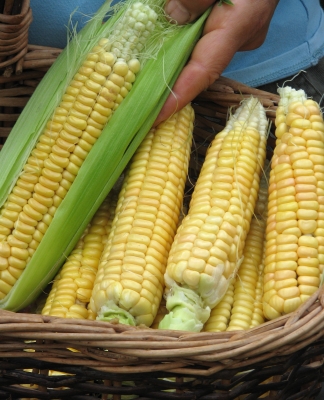
Golden Bantam corn
Backyard gardens are too small? My vegetable beds are three feet wide and about 20 feet long. I plant corn in “hills,” which actually are not at all hilly. In gardening, a “hill” is a station, a location where you grow a clump of plants.
 Squash is another plant grown in hills, in this case so that trailing vines from each of a few plants can radiate out in all directions.
Squash is another plant grown in hills, in this case so that trailing vines from each of a few plants can radiate out in all directions.
One reason to plant corn in hills is for good pollination. The pollen that drops from the tassel atop each plant is heavy, relying mostly on gravity, not wind or insects, to carry it to the silk. Pollen grains germinate on the silk then penetrate and travel to the female ovule attached to the cob, each one of which becomes, when fertilized, a kernel. Mating is more guaranteed with clumps of tassels perched above lots of receptive ears.
Four seeds go into each planting hole, which are two feet apart running two rows per bed. That leaves twenty hills per bed, thinned to three plants per hill.
The fourth seed per hill was for insurance, mostly from mice or chipmunks. As further insurance, I sometimes dust the seeds with a mixture of cayenne pepper and cinnamon. This year, for even further insurance, and for an earlier crop from the earliest planting, I presprouted the seeds indoors by soaking them overnight in a jar with a screened lid, then rinsing then turning the jar upside down in a saucer twice daily in my seed incubator. Seeds went into the ground when roots were 1/2 inch long. At any rate, I thin the number of plants in each hill to the strongest three once they are up and growing.
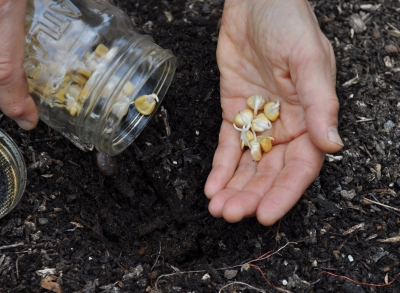
Sowing pre-sprouted corn seeds
Each plant yields one or two ears, usually two. Let’s say one and a half, which makes ninety ears per bed. That’s a lot of sweet corn, and from only one of the four beds! (It’s hard to believe. Have I miscalculated?)
No Wasted Space
It’s not as if this last corn bed, any of my four corn beds for that matter, has stood idle waiting to be planted. All the beds do double or triple duty.
What’s planted before or after the corn depends on when the bed is planted. The first planting went in in mid-May, which coincides with the average date of the last killing spring frost here. Even that first can be preceded by an early planting of arugula, turnips, spring radishes, and lettuce. These plants thrive in cool whether, germinating and growing, with their harvest over and plants pulled as soon as young corn stalks have grown enough to need the space.
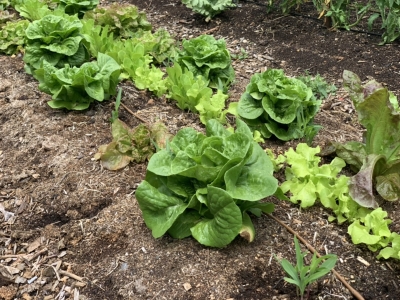
Sweet corn and early lettuce
Following harvest of the corn, the bed can be cleared for any one of a number of fall crops such as winter radishes, bok choy, spinach, and, again, lettuce, and turnips.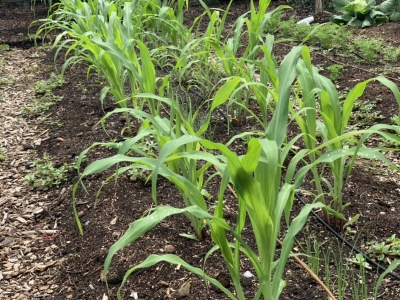
(Corn is a hungry plant. I detail creating and maintaining a rich soil for corn and other hungry vegetables — organically, of course — and intercropping and succession planting for maximum production in minimum space in my book Weedless Gardening.)
Pick your Corn
Sweet corn is among the vegetables that I most eagerly await in summer, which brings me to debunking the second reason “experts” put forward that corn isn’t worth planting in backyard gardens.
All sweet corns are not created equal, and planting sweet corn lets me — and could let you — choose which varieties to grow: yellow, white, bicolor, supersweet, or heirloom sweet. I’m partial to old-fashioned sweet corn. It’s not nearly as sweet as modern supersweets but has a rich, corny flavor and a texture you can sink your teeth into.
My favorite variety, Golden Bantam, was the standard of excellence for sweet corn a hundred years ago.
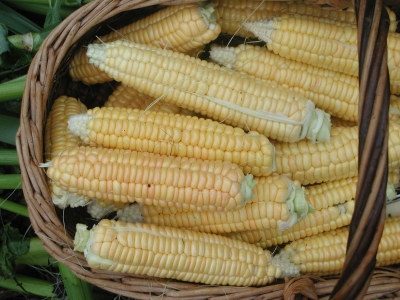
Golden Bantam corn
One season about 30 years ago my corn crop, for some reason I can’t remember, came up short. I went to the farmstand of a local sweet corn grower and asked if they grew and sell Golden Bantam. The farmer behind the counter smiled and said, “Yes, we grow it, but we grow that for ourselves.”
Not everyone is a fan of Golden Bantam. My friend Kit says it tastes like “horse corn.” Still, growing your own corn lets you seek out and grow whatever variety you like best.

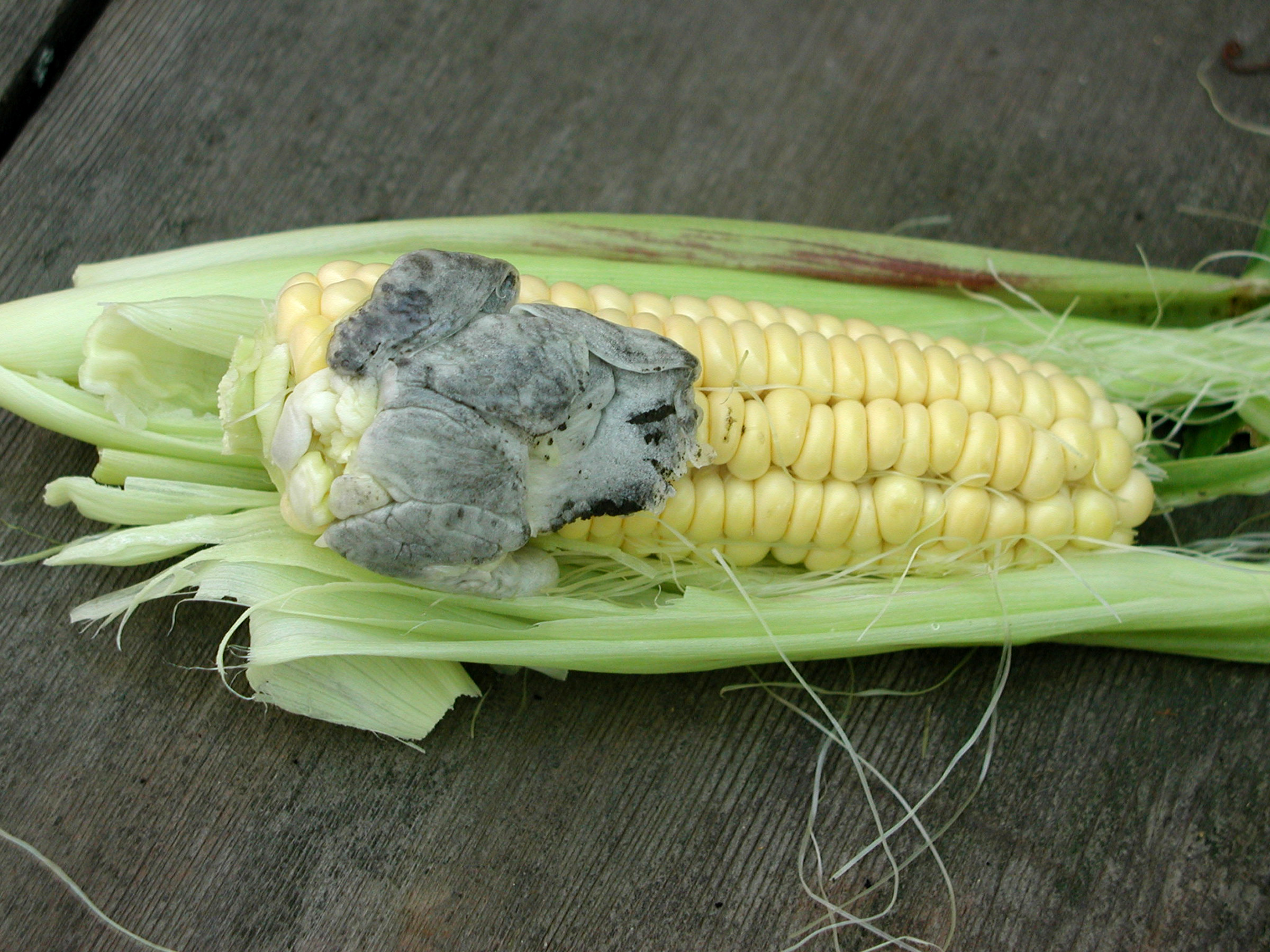
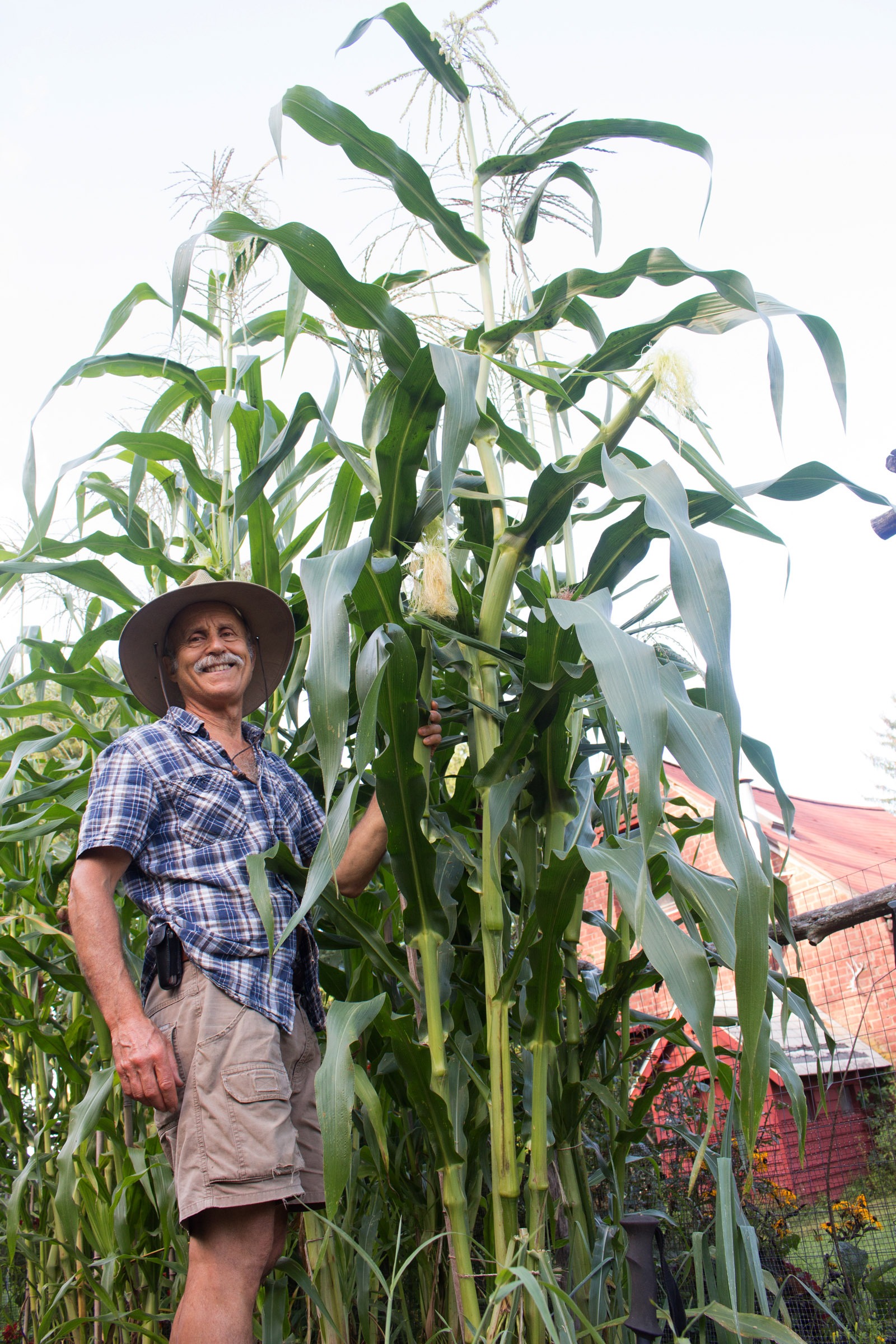
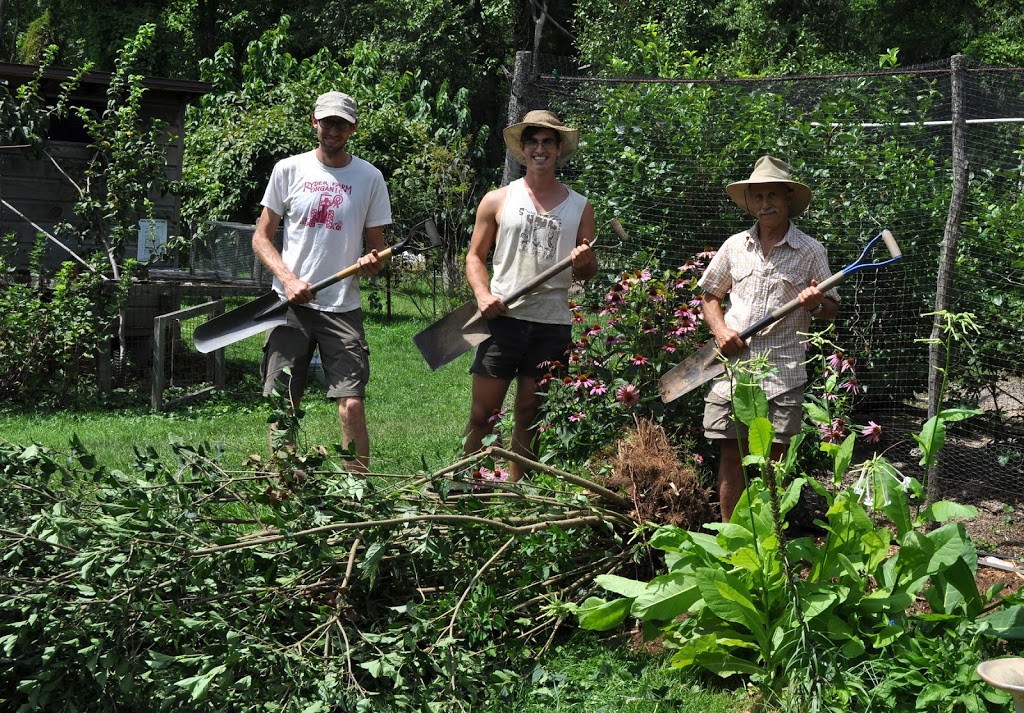

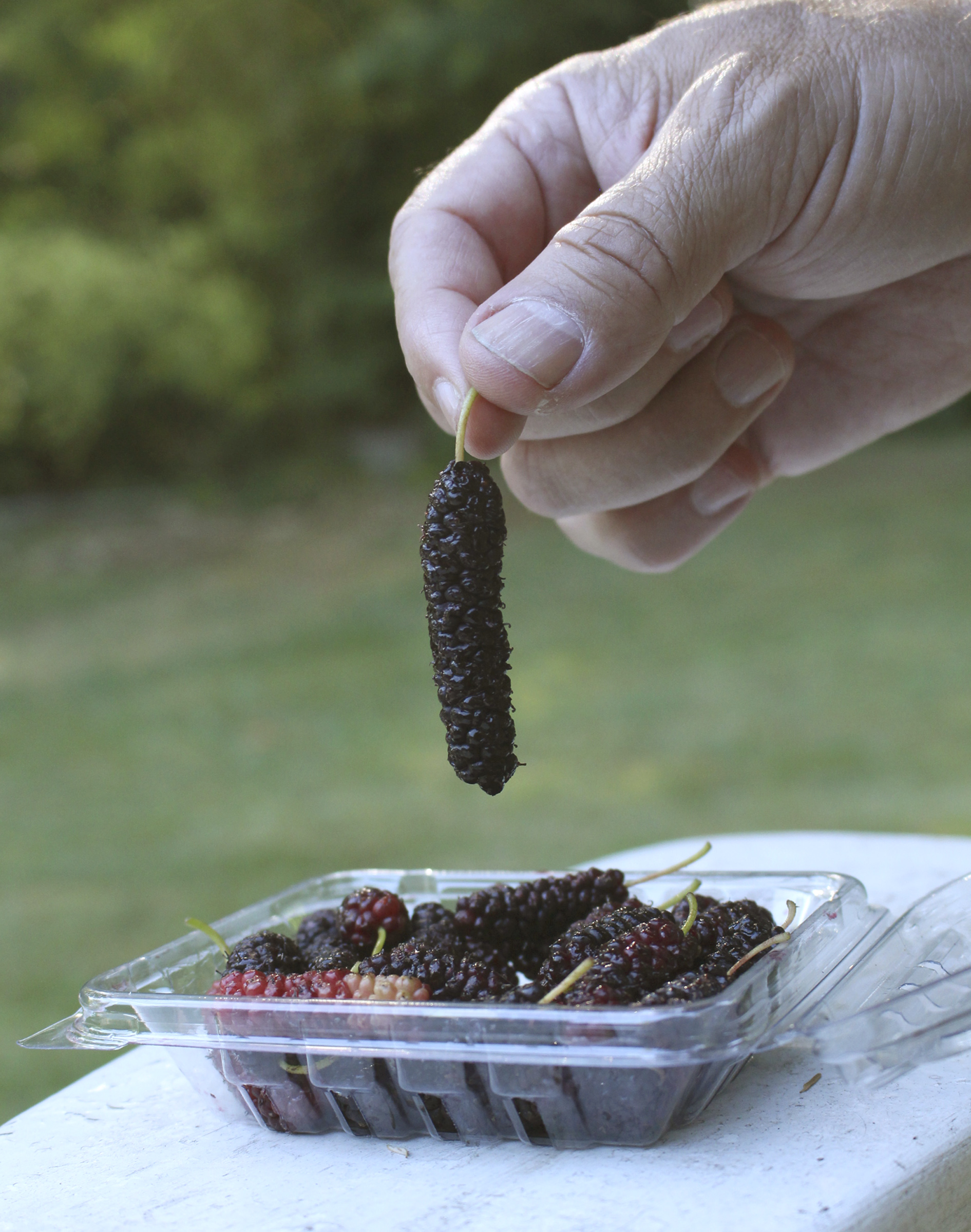

Can you re-sow corn in the same location year after year?
Hi Sally and Michael, Generally it’s not a good idea to sow the same vegetable in the same location year after year because of encouraging a possible buildup of pests specific to that particular vegetable. Not that that will definitely happen; just that it increases the chances. Another reason is because it will keep taking the same balance of nutrients out of the soil every year. By practicing crop rotation, you also avoid this.
Inspiring and informative, as always. Thanks!
Thank YOU
So interesting about the heavy pollen – all this time I have thought corn was wind pollinated.
Wind does carry it, but not far. Mostly, gravity does the job.
I thought for sure one of your reasons for not growing it is because of raccoons! You don’t have problems with ‘coons? I have always wanted to grow it but figured it would get ravaged by critters unless I surround the area with electric wire.
Not one of my reasons. I have two outdoor only dogs that patrol the property (I hope) to keep invaders away.
Interesting article and after reading all of the replies I’m not surprised to hear of any of the problems. I think the archaeologist are wrong the native Americans have lived in North America for far more than 9,000 years. However, growing maze has been a staple in their gardens for at least 9,000 years. I would think with all of their experience that more people would not have paid attention to how they grow their corn. Always grown together the ‘3 sisters’ are always grown together and solve all of the problems listed above. Corn is a glutton for nitrogen. Beans put nitrogen into the soil. and squash has a spiny stem that creates a barbed wire hell for raccoons. Corn grown in clumps will also give support for the beans so no artificial support or staking is needed for them. The squash and it’s broad leaves not only keep the raccoons at bay but they block the Sun which retards weed growth and holds moisture in the soil. When you think about how well the three plants work together it’s pretty much a no-brainer to grow them that way. When you add the fact that the corn makes the bread you eat and the beans with the squash produce protein that our bodies need along with plenty of carbohydrates all around and I don’t see how a person could bring themselves to grow the three any other way? You can try to put your skill up against 9,000 years of tradition but I doubt that you could do it in any way sensible without resorting to the modern farming techniques that have devastated the topsoil in North American, not to mention having to use chemical fertilizers primarily produced in Russia. That dependency and how unwise it is should be obvious two years into the war with Ukraine. Fertilizer prices have driven the price of corn in my local market up to $0.75 or a dollar an ear. Victory gardens were popular in my Father’s Day because it was the number one thing the average citizen could do to win the war against the Nazis and Japs. With climate change sure to decimate the world as we know it, the sooner that we adopt more sound gardening techniques for ourselves and community the better. The days are not very far off when even a backyard garden may mean the difference between life and death for you and your family. The Earth has cleansed itself in the past many times. a simple thing that we seem to refuse to learn?! The indigenous North American tribes existed in harmony with nature for tens of thousands of years before we got here. In just 200 years we have all but totally destroyed this beautiful environment that was ours to Shepherd. The aquifer that has fueled farming in the Midwest for over 100 years is nearly gone and will not replenish itself fast enough to support the amount of life it has been supporting for so many years. One look at the other side of the Hoover dam and the fact that the Colorado River has not hit the Gulf of California for generations now should be all the warning that you need to start concentrating on how to produce your food in the most economical environmentally friendly way. Good luck, we’re all going to need it. I don’t know what exactly is coming nor can I predict exactly when it’s going to be here but I’m sure of two things it’s going to get here much sooner than the experts have been telling us it will and when it does get here each and every one of us will have deserved it.
While I agree with most of what you write, growing corn as one of a 3 sisters planting is not necessarily the most efficient way to grow these plants. It works well in certain environments with certain amounts of labor and land available, but I would not generalize its benefit.
Most of our chemical fertilizers, I am pretty sure, do not come from Russia. Phosphorus is mined in Florida. The US produces more nitrogen fertilizer than Russia. Russia does produce more potassium fertilizer than the US.